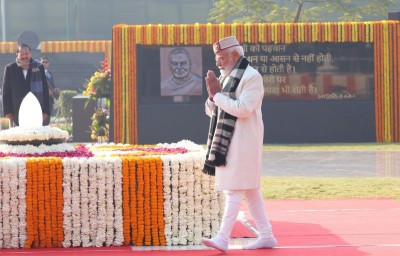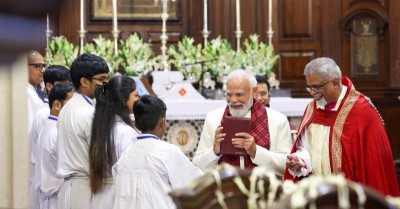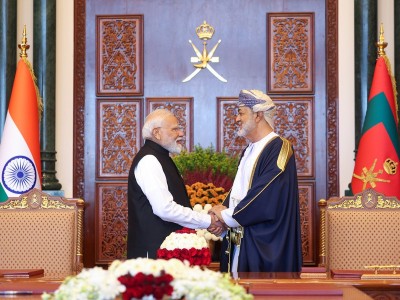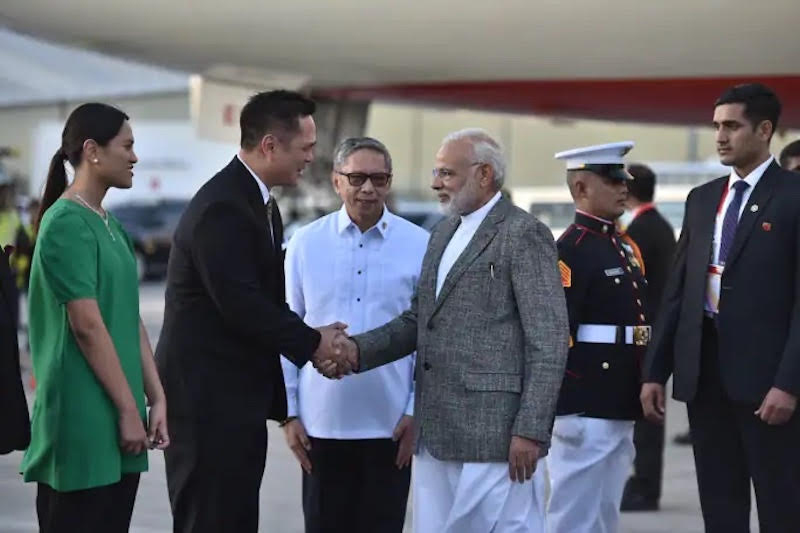 ASEAN
ASEAN
India’s Act East Policy Continues to Blossom
At the opening session of the Association of Southeast Asian Nations (ASEAN) Post Ministerial Conference in Jakarta on July 13, Indian External Affairs Minister S. Jaishankar emphasised how ASEAN’s importance remains undeniable in New Delhi’s Act East policy and its strategic outlook for the Indo-Pacific.
India has come a long way with its relations with Southeast Asian countries – from a period of wariness to a robust and multi-dimensional comprehensive strategic partnership. While there have been positive trends since the establishment of the Look East policy in 1991, the dynamic and groundbreaking changes brought about by the Act East policy of 2014 deserve significant recognition.
Since 2014, New Delhi has pursued a more proactive, confident, and multi-pronged foreign policy approach towards Southeast Asia in ways that have significantly expanded from limited cooperation in areas of low politics to expanding partnerships in the realm of security and defence.
While in the past, India showed reluctance in translating its growing material capabilities into robust security ties with its Southeast Asian neighbours, the India of today continues to unequivocally highlight its desire to not only deepen, but also broaden the scope and nature of its strategic relations with Southeast Asian countries.
More importantly, India’s intent to play a larger role as a security partner in the region is also welcomed by the regional countries. In this regard, the past few years have witnessed a series of noteworthy developments vis-à-vis India’s strategic ties with its Southeast Asian neighbours.
In 2016 bilateral relations between India and Vietnam were elevated to a comprehensive strategic partnership. The increasing level of mutual strategic convergence between New Delhi and Hanoi since then, paved the way for their first bilateral army-to-army exercise in 2018, called VINBAX.
To further demonstrate the mutual desire of both countries to broaden the scope of their deepening security partnership, Indian Defence Minister Rajnath Singh and his Vietnamese counterpart General Phan Van Giang signed the Joint Vision Statement on India-Vietnam Defence Partnership towards 2030.
This is important for two reasons. First, considering Vietnam’s sensitivities towards inter-state alignments, it is quite rare for Hanoi to agree to and sign a strategic vision statement that encompasses 10 years, given that most of its bilateral commitments are often limited to five years or less. Second, a memorandum of understanding (MoU) was also signed by both defence ministers on mutual logistics support.
This MoU opens doors for the militaries of both countries to utilise each other's bases for repair and replenishment of supplies. This is highly significant given the fact that such an agreement is the first which Vietnam has forged with any state due to its wariness of giving extra-regional powers access to its strategic bases and thus compromising its political autonomy. Hence, such an agreement illustrated how Vietnam has managed to accommodate India’s security partnership of this depth amid its “four no’s” principle.
Furthermore, as an illustration of New Delhi’s commitment towards being a responsible security partner, India gifted its indigenously built missile corvette warship, the INS Kirpan to the Southeast Asian country in June 2023 to enhance its maritime security capacity amid concerns in the South China Sea.
India’s security ties with Indonesia have also been gaining significant momentum since 2014. In 2018, New Delhi and Jakarta elevated their relations to a comprehensive strategic partnership and unveiled a new bilateral naval exercise called Samudera Shakti, which includes a critical war-fighting component to the strategic partnership.
Furthermore, both sides are also in talks to bolster maritime connectivity cooperation vis-à-vis India’s Andaman and Nicobar Islands and Indonesia’s island of Aceh.
Another important development occurred in February when an Indian Navy submarine docked in Jakarta for the first time.
Such an activity not only symbolises the Indian Navy’s extended operational reach into the Western Pacific, but also illustrates Indonesia’s accommodation of India’s increasing military presence in Southeast Asia.
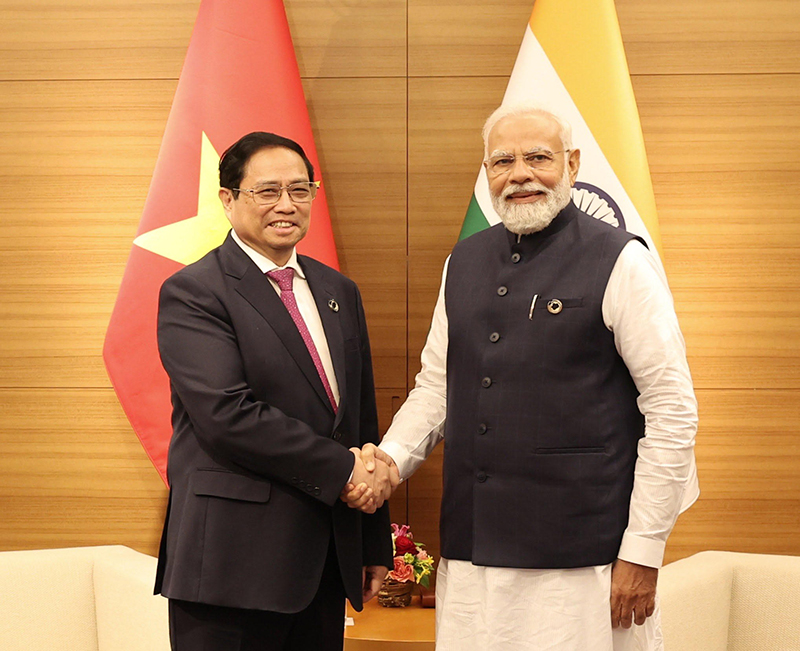 PM Modi meeting his Vietnamese counterpart Pham Minh Chinh in May 2023. Photo courtesy: Narendra Modi Twitter (X)
PM Modi meeting his Vietnamese counterpart Pham Minh Chinh in May 2023. Photo courtesy: Narendra Modi Twitter (X)
This is important given that over two decades ago, Jakarta was increasingly wary of New Delhi’s expanding naval capabilities due to a lack of mutual understanding. Such clouds have cleared today as both countries continue to indicate their willingness to consistently forge stronger security ties, particularly in the maritime domain, to ensure the stability of the Indo-Pacific.
Another notable milestone in India’s contemporary Southeast Asian engagements is its growing ties with the Philippines. While India-Philippines ties remained cordial at best for over two decades since the end of the Cold War, recent developments indicate the willingness of both countries to maximise the utility of their growing strategic relationship.
While past engagements between Manila and New Delhi were often confined to commerce, culture, and science, and education, significant breakthroughs were achieved in the past few years in the field of defence cooperation, including naval drills in the South China Sea, the sale of the BrahMos supersonic cruise missiles, and ongoing talks towards enhancing bilateral maritime cooperation.
The past few years have also witnessed a reinvigorated desire between India and other Southeast countries like Malaysia, Singapore, Thailand, and Cambodia to explore new areas of defence cooperation. In fact, four months after the elevation of ties between India and ASEAN to a comprehensive strategic partnership in November 2022, both sides also held their first joint maritime drills in the South China Sea.
Moreover, on July 11, Indian Defence Minister Singh inaugurated the regional office of Hindustan Aeronautics Limited (HAL) in Kuala Lumpur, which will serve as a potential hub for the Indian defence company’s engagements with Southeast Asian countries. More importantly, India has also become more vocal on the plight of Southeast Asian countries in the disputed South China Sea amidst China’s increasing belligerence against its neighbours’ sovereignty and sovereign rights.
Therefore, along with its continuous growth in material capabilities, India has been constantly demonstrating its commitment towards facilitating proactive security engagements with countries beyond its immediate geographic neighbourhood.
As the power competition between the United States and China continues to unfold in Southeast Asia, the rise of India and the proportional accommodation of Southeast Asian countries towards its desire to play a larger security role in the greater Indo-Pacific will not only allow New Delhi to effectively pursue its great power interests but will also provide Southeast Asian countries with a strategic alternative amid the rigid and polarising geopolitical dynamics of the region.
While India still has a long way to go in terms of solidifying its position in Southeast Asia vis-à-vis established powers like the US, China, and Japan, an objective assessment of the evolving patterns of its engagement in the region clearly shows significant progress and vast potentials.
Support Our Journalism
We cannot do without you.. your contribution supports unbiased journalism
IBNS is not driven by any ism- not wokeism, not racism, not skewed secularism, not hyper right-wing or left liberal ideals, nor by any hardline religious beliefs or hyper nationalism. We want to serve you good old objective news, as they are. We do not judge or preach. We let people decide for themselves. We only try to present factual and well-sourced news.





